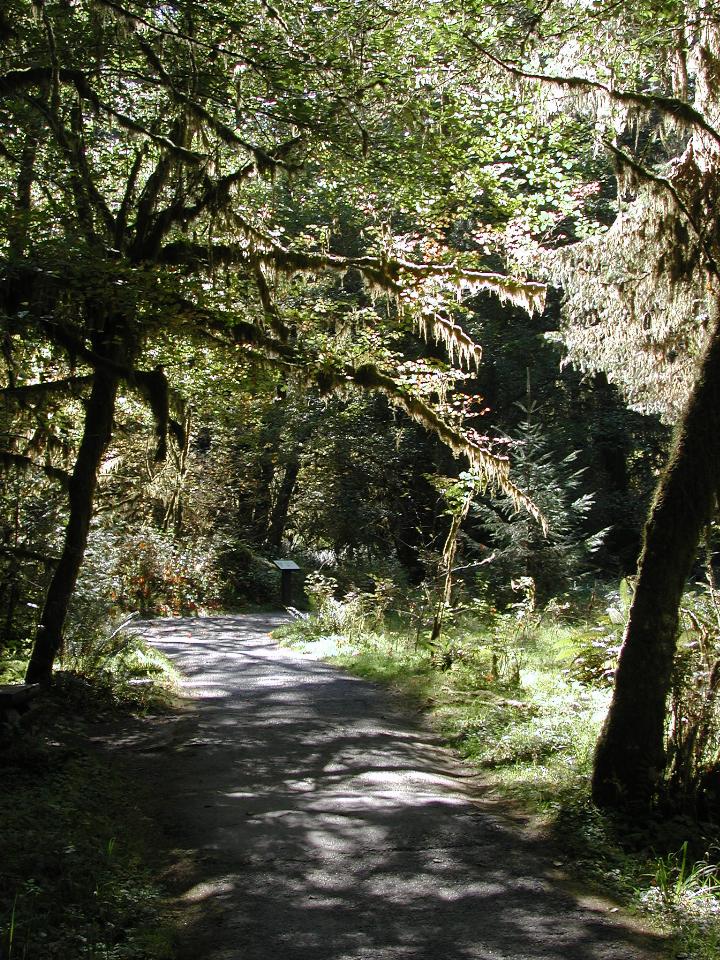
At the end of the road is the Hoh Rain Forest Visitor Center. There are a number of walks, from 30 minutes to overnight starting around there. Since I wasn't prepared for anything too strenuous, I chose the 1.5 mile, one hour walk, which covers the various types of terrain in the bottom of the valley.

At the start of the path - many trees here have moss growing on them. Actually the "moss" gets all its nutrients from the air - water and chemicals. It has no affect on the tree.
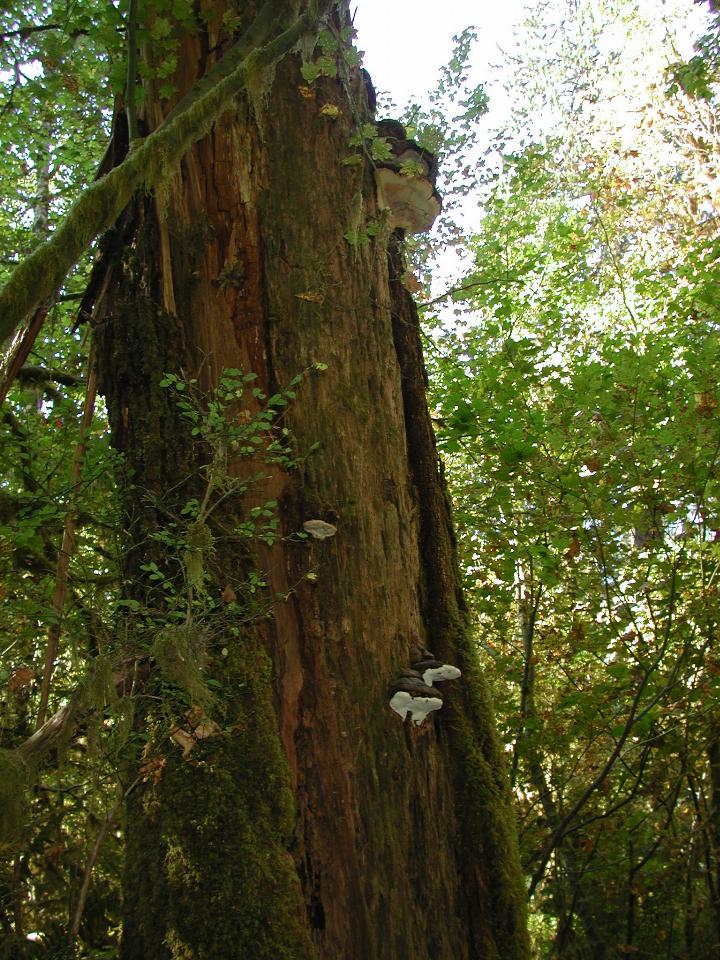
These fungii are the prime movers in tree decay. Their roots grow into the tree, and start decomposing the wood from the inside.
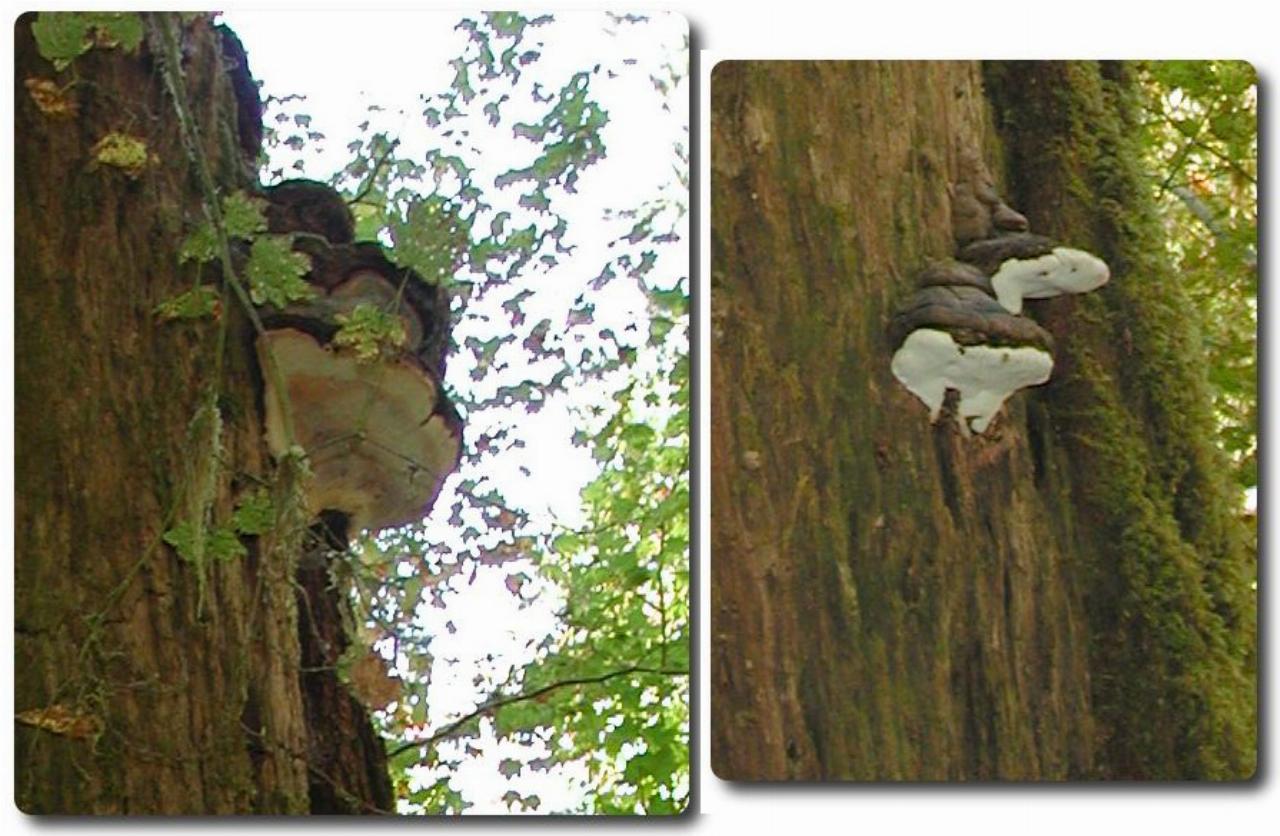
A better view of the two fungii areas.
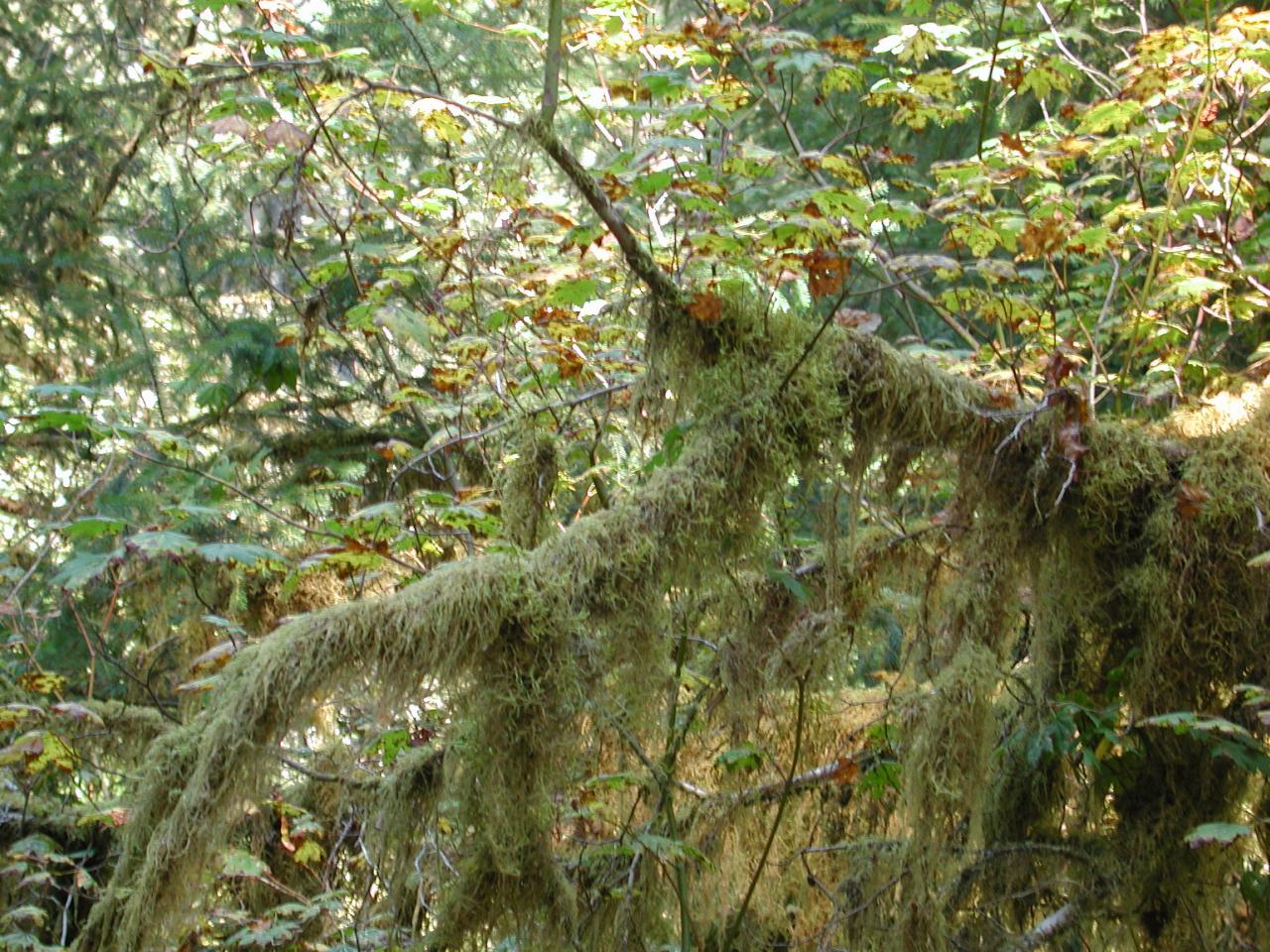
More moss.
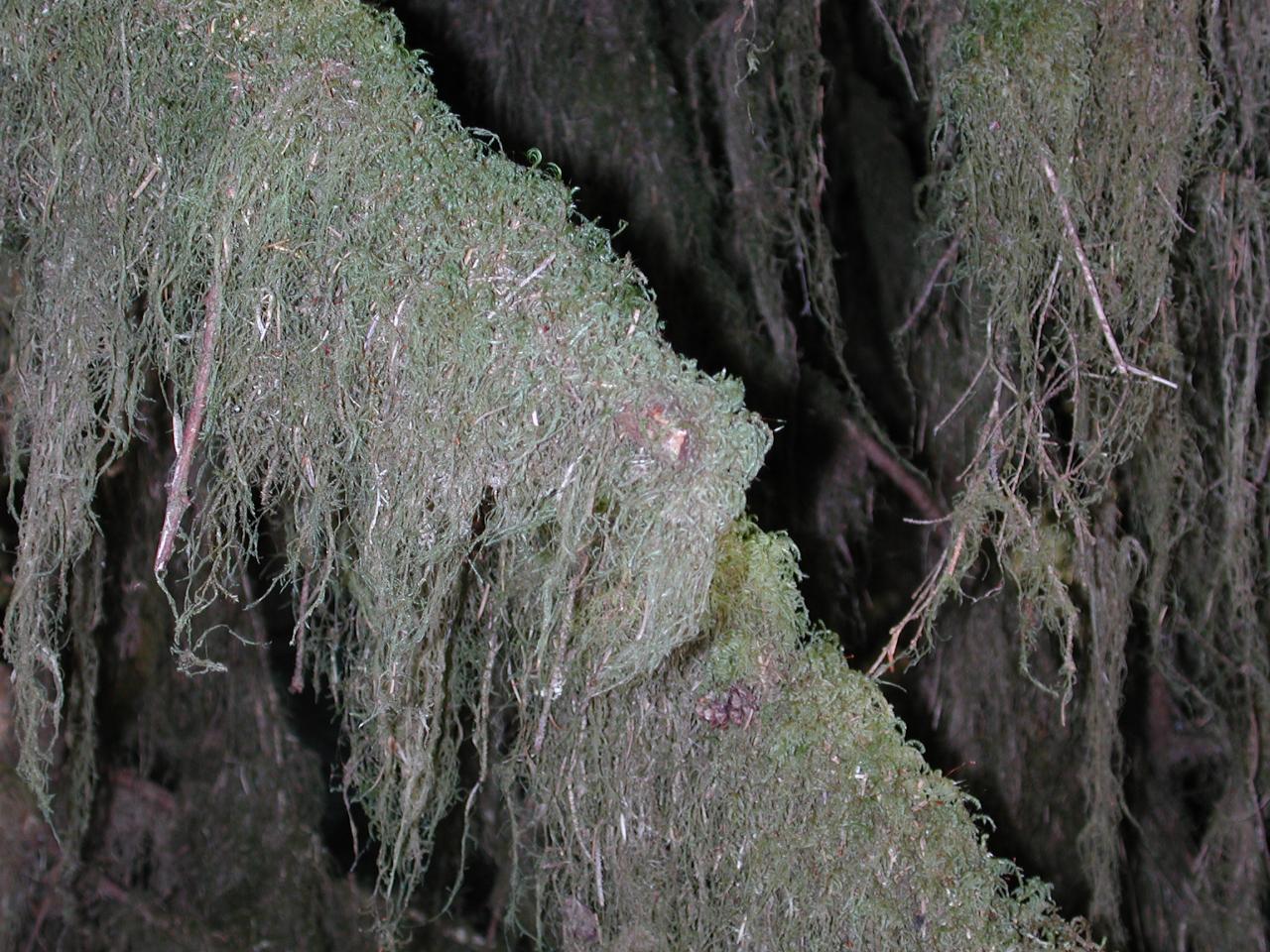
A much closer view. The colours are a little washed out because of the flash; this part of the forest was quite dark.
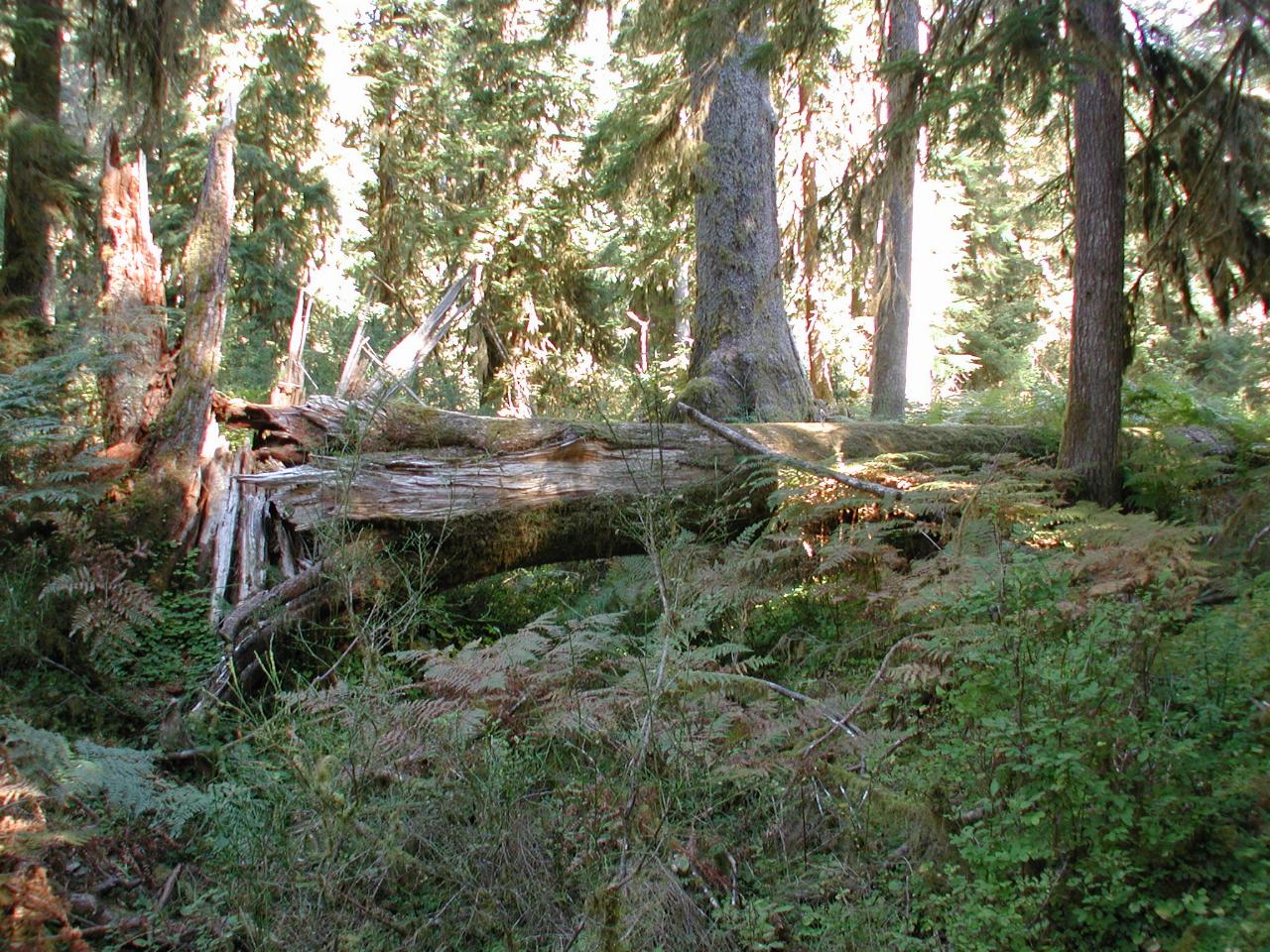
Due to the strong winds coming in from the Pacific, many trees are blown over every winter. However, they act as an incubator/nursery for new trees, which start growing in the decaying logs. Because the climate is wet, but not all that warm, the decay is relatively slow, giving the seeds which fall onto logs a chance to establish themselves. Eventually, some of them will form long enough roots to reach the ground.
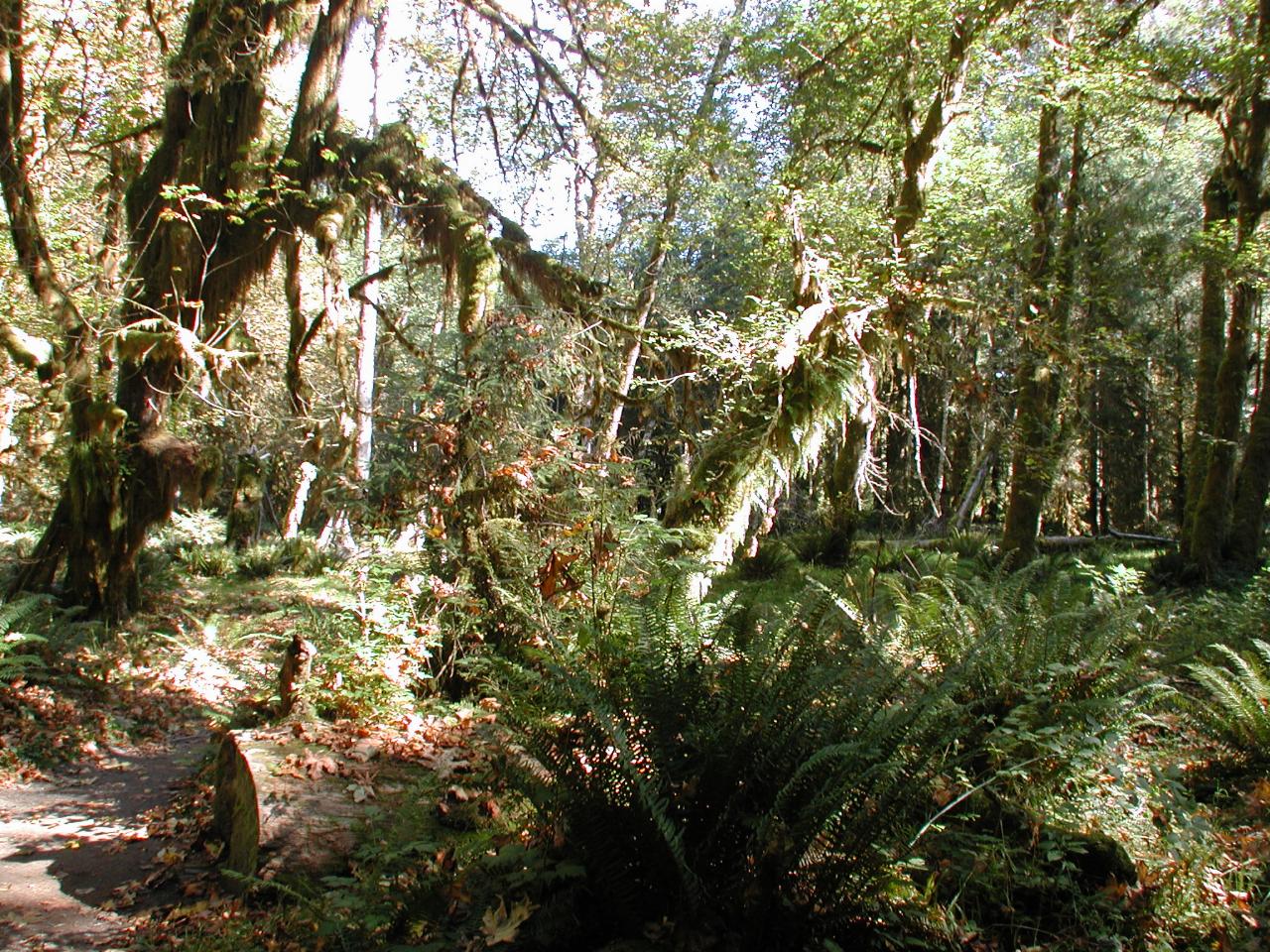
The forest floor has a large amount of growth in it. However, this is kept in check by the animals grazing on it; left alone, you would not be able to see around in a short period.
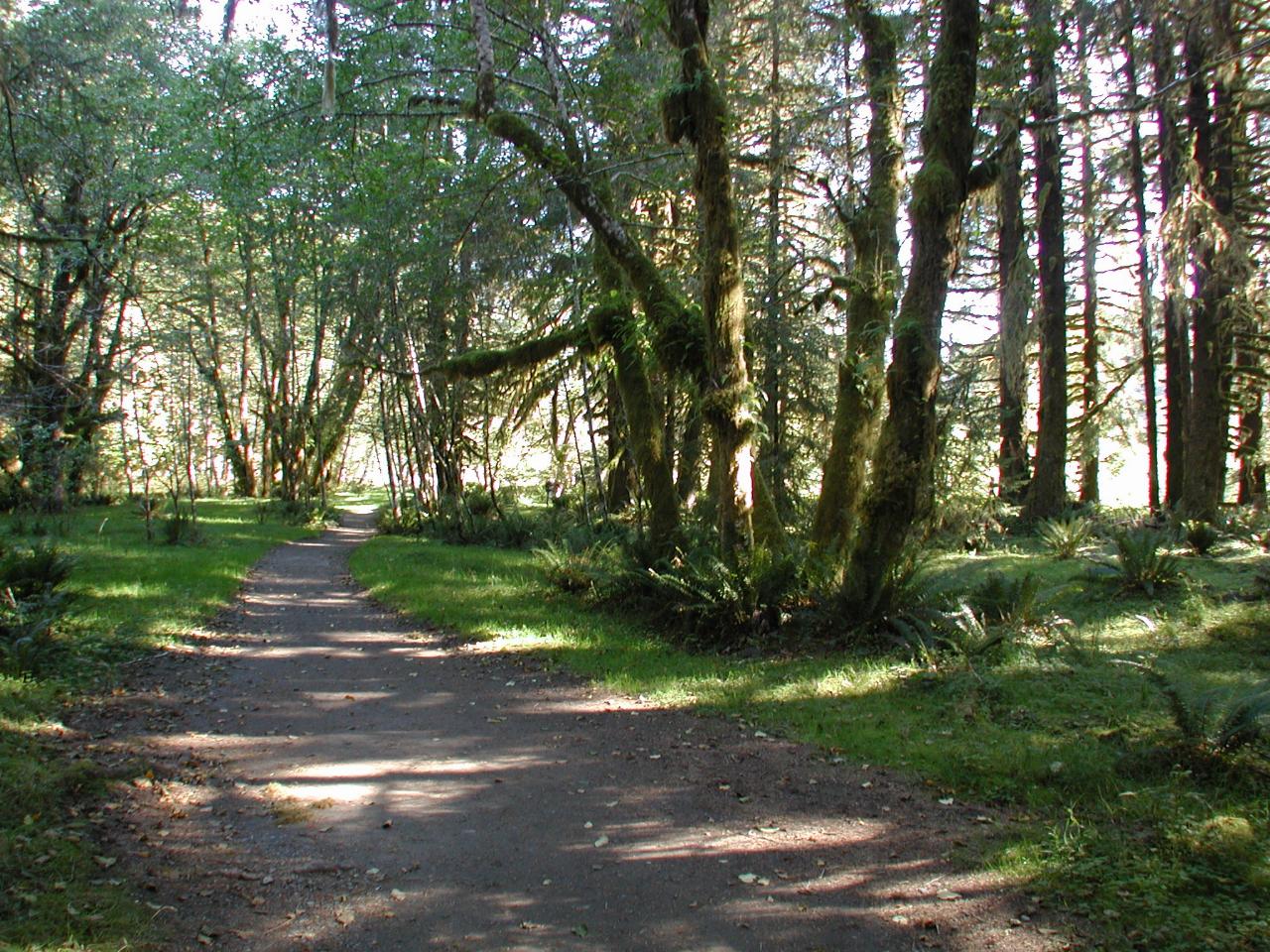
However, this is a newer part of the forest, and is relatively virgin. This used to be part of the river bed, until the river shifted course, and now it is building into the same pattern as the older forest seen in the above photo.
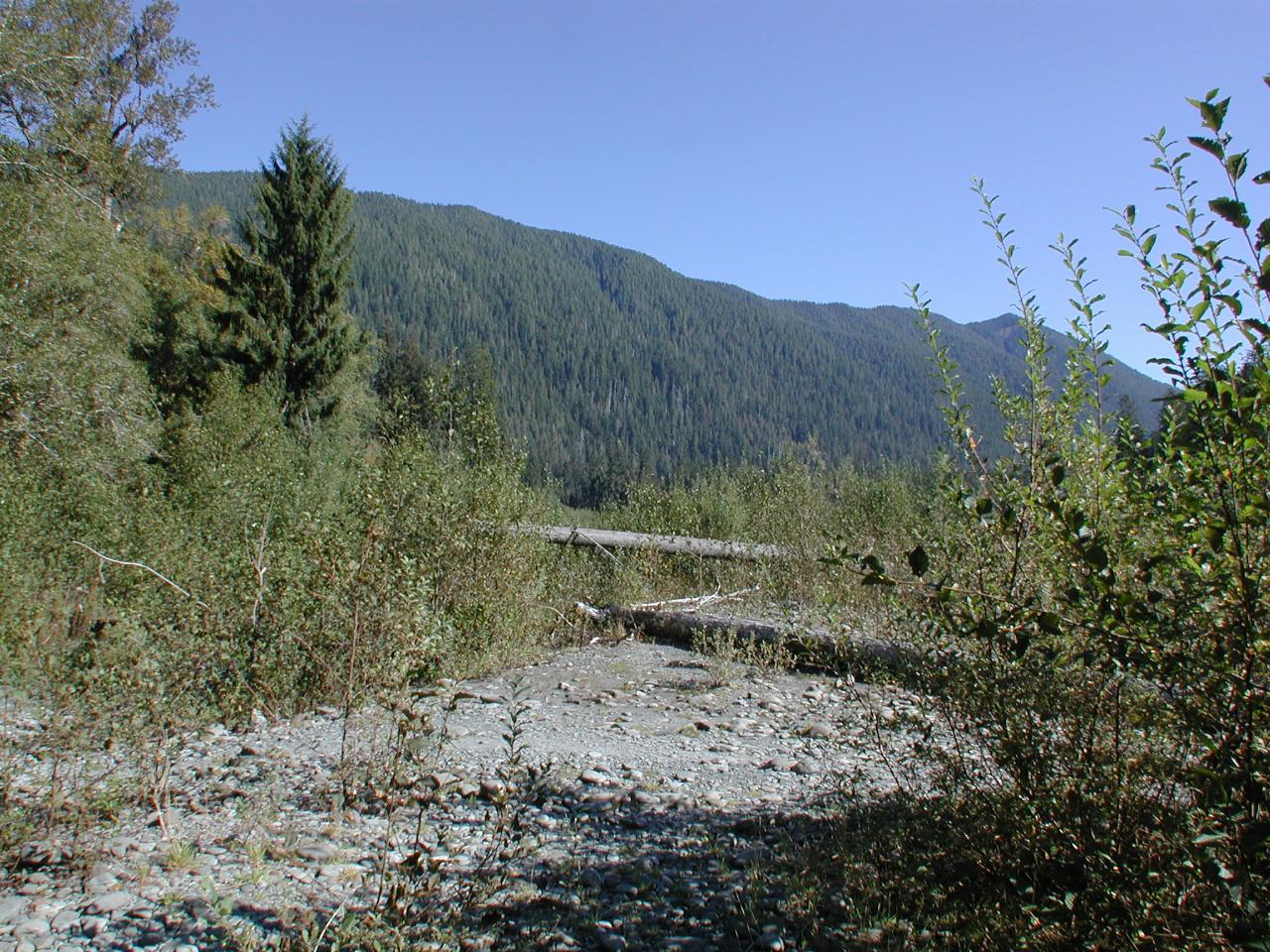
The current edge of the river. Not the trees off to the left, which are not the typical Sitka Spruce, but more typically dogwoods. The part where I was standing probably floods regularly, so any plants growing there might only survive for the year.